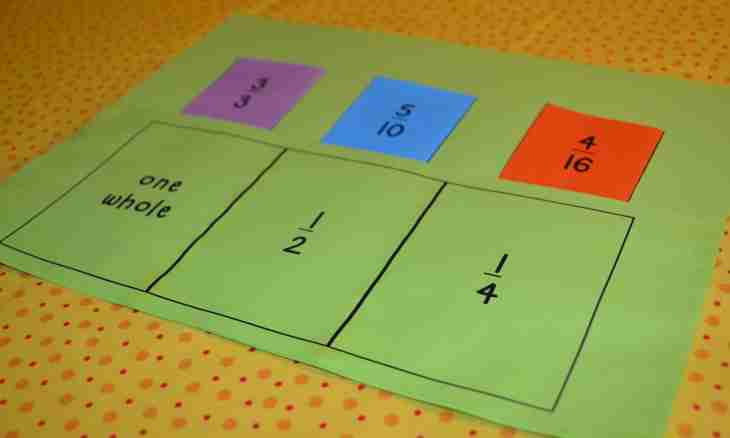Common fractions are used, oddly enough, or for training in the most elementary grades, or for the indication of the most exact values of numbers. It is connected with the fact that unlike more widely applied decimal fractions they cannot be irrational, that is have infinite number of signs. Rules of division of common fractions are rather simple.
Instruction
1. If a divider is the common fraction too, then begin with its inverting: trade places numerator and a denominator. Then replace a division sign with the sign of multiplication, and you make all further calculations by rules of multiplication of two common fractions. For example, if it is necessary to divide 9/16 into 6/8, then it is possible to write down action of this step so: 9/16: 6/8 = 9/16 * 8/6.
2. Reduce numerators and denominators of both fractions multipliers if there is an opportunity to pick up for them a common divisor. It is necessary to divide both numerator and a denominator into this divider (integer). In an example from the previous step numerator of the first fraction (9) and a denominator of the second (6) have a common divisor 3, and for a denominator of the first (16) and numerator the second (8) such divider will be figure 8. After the corresponding reduction the record of action will take such form: 9/16: 6/8 = 9/16 * 8/6 = 3/1 * 1/2.
3. Multiply in pairs numerators and denominators of the fractions received as a result of reduction - the calculated value and will be required result. For example, the sample used above after this step can be written down so: 9/16: 6/8 = 9/16 * 8/6 = 3/2 * 1/2 = (3*1)/(2*2) = 3/4.
4. If the number standing in numerator of the received result is more than number in its denominator, then such form of record is called the "wrong" common fraction and it should be transferred to the "mixed" format. For this purpose divide numerator into a denominator, write down the received whole value before fraction, put a remainder of division in numerator, and leave a denominator in the previous form. For example, if the result received after the previous step was equal 9/4, then it should be given to a look 2 1/4.

